The Baltics, an enchanting region bordering the Baltic Sea, unfolds a captivating tapestry of history, culture, and natural beauty. From the unique physical characteristics of the Baltic Sea to the diverse traditions of the surrounding countries, this region offers a wealth of experiences that will leave an indelible mark on any traveler.
Delve into the geological history of the Baltic Sea, explore the political and economic landscape of the Baltic countries, and discover the unique challenges and opportunities facing this region in the 21st century. The Baltics await your exploration, promising an unforgettable journey.
Baltic Geography
The Baltic Sea region encompasses a unique and diverse array of landscapes, coastlines, and waterways, shaped by a rich geological history and ongoing natural processes. The Baltic Sea itself, a vast brackish water body, serves as the centerpiece of the region, connecting several countries and playing a pivotal role in its ecosystems, economies, and cultural heritage.
The Baltic Sea is a relatively young body of water, formed during the last glacial period approximately 10,000 years ago. As the glaciers retreated, they carved out deep basins and deposited vast amounts of sediment, creating the foundation for the Baltic Sea’s present-day topography. The Baltic Sea is characterized by its low salinity, a result of the limited exchange of water with the North Sea and the significant freshwater input from rivers and streams.
Physical Characteristics
- Low Salinity: The Baltic Sea’s salinity ranges from 0.5% to 8%, significantly lower than the salinity of the North Sea and the Atlantic Ocean. This low salinity is attributed to the limited exchange of water with the North Sea and the high freshwater input from rivers and streams.
- Brackish Waters: The Baltic Sea is classified as a brackish water body, meaning it contains a mixture of freshwater and saltwater. The low salinity supports a unique ecosystem adapted to both freshwater and marine conditions.
- Shallow Depth: The Baltic Sea is relatively shallow, with an average depth of around 55 meters (180 feet). The shallow depth allows sunlight to penetrate the water column, supporting diverse marine life and plant growth.
- Extensive Coastline: The Baltic Sea has a highly indented coastline, with numerous bays, inlets, and islands. The coastline is characterized by a mix of sandy beaches, rocky shores, and forested headlands.
- Archipelagos: The Baltic Sea is home to several large archipelagos, including the Stockholm Archipelago in Sweden and the Åland Islands between Finland and Sweden. These archipelagos provide important habitats for wildlife and offer scenic landscapes for recreation and tourism.
Geological History
- Glacial Formation: The Baltic Sea was formed during the last glacial period, approximately 10,000 years ago. As the glaciers retreated, they carved out deep basins and deposited vast amounts of sediment, creating the foundation for the Baltic Sea’s present-day topography.
- Post-Glacial Isostatic Rebound: After the glaciers retreated, the Earth’s crust began to rebound, causing the land around the Baltic Sea to rise. This process, known as post-glacial isostatic rebound, continues today, contributing to the gradual emergence of new land areas and the formation of new islands.
- Sea Level Changes: The Baltic Sea has experienced significant sea level changes throughout its history. During the last glacial period, the sea level was much lower than it is today. As the glaciers melted and the land rebounded, the sea level rose, flooding coastal areas and creating the Baltic Sea’s present-day coastline.
Baltic Countries
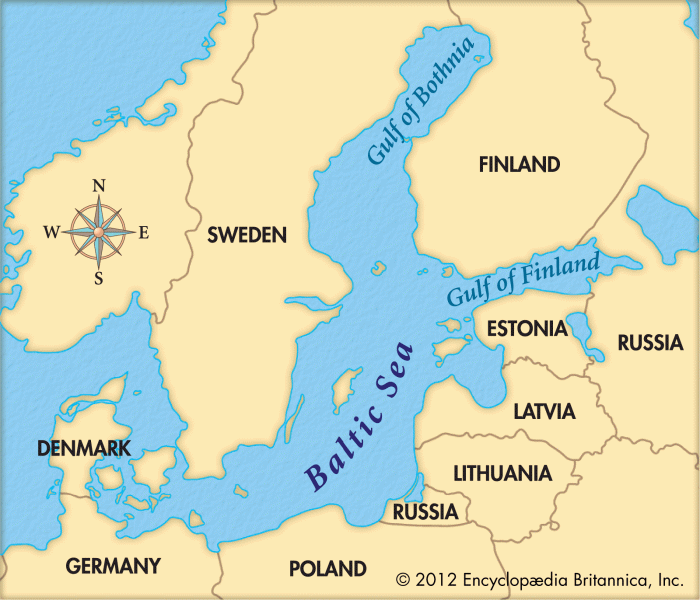
The Baltic Sea is a marginal sea of the Atlantic Ocean, located between the Scandinavian Peninsula and the mainland of Europe. The countries that border the Baltic Sea are:
- Denmark
- Estonia
- Finland
- Germany
- Latvia
- Lithuania
- Poland
- Russia
- Sweden
The Baltic countries share many cultural and historical similarities. They have all been influenced by the Vikings, the Teutonic Knights, and the Russian Empire. As a result, they share many common traditions and customs. For example, they all celebrate Midsummer, a festival that marks the summer solstice. They also all have a strong tradition of folk music and dance.
However, there are also some important differences among the Baltic countries. Estonia and Finland are both Lutheran countries, while Latvia and Lithuania are both Catholic countries. Estonia and Finland are also both members of the European Union, while Latvia and Lithuania are not. These differences have led to some tension between the countries in the past.
The political and economic landscape of the Baltic region is complex. The countries are all members of the United Nations, but they have different relationships with the European Union and NATO. Estonia and Finland are both members of the EU and NATO, while Latvia and Lithuania are only members of the EU. Russia has a strong influence in the region, and there is some concern about its intentions towards the Baltic countries.
The Baltic countries are a diverse and fascinating region. They have a rich history and culture, and they are playing an increasingly important role in the world.
Baltic Economy
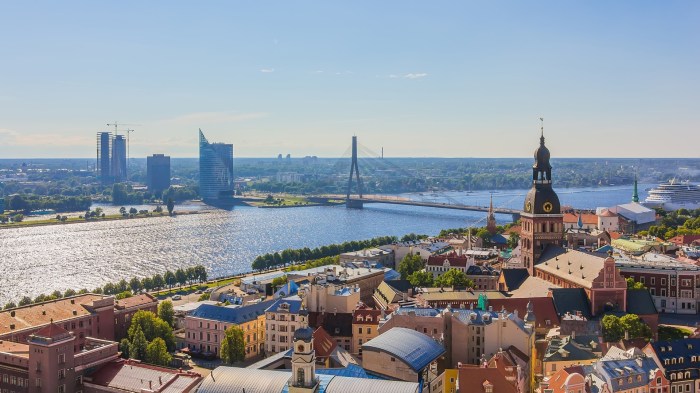
The Baltic countries of Estonia, Latvia, and Lithuania have undergone significant economic transformations since regaining independence in 1991. They have implemented market reforms, privatized state-owned enterprises, and integrated into the European Union and the global economy. As a result, they have achieved impressive economic growth and improved living standards.
The Baltic economies are characterized by a high degree of openness and dependence on foreign trade. The Baltic Sea plays a crucial role in regional trade and commerce, facilitating the movement of goods and services between the Baltic countries and their neighbors.
Major Industries and Economic Sectors
The major industries in the Baltic countries include:
- Services: The service sector is the largest and fastest-growing sector in the Baltic economies, accounting for over 70% of GDP. Key service industries include tourism, financial services, and information and communication technology (ICT).
- Manufacturing: The manufacturing sector is also important, contributing around 20% of GDP. Major manufacturing industries include electronics, machinery, and food processing.
- Agriculture: Agriculture plays a smaller but significant role in the Baltic economies, accounting for around 5% of GDP. Major agricultural products include dairy, meat, and grains.
Economic Growth, Unemployment, and GDP, Baltics
The Baltic countries have experienced strong economic growth in recent years. Estonia, in particular, has been one of the fastest-growing economies in the European Union. In 2022, Estonia’s GDP grew by 8.3%, Latvia’s by 4.6%, and Lithuania’s by 4.8%.
Unemployment rates in the Baltic countries have declined in recent years. In 2022, Estonia’s unemployment rate was 5.2%, Latvia’s was 6.9%, and Lithuania’s was 6.2%.
The Baltics, with their rich history and vibrant culture, offer a captivating glimpse into the past. From the medieval grandeur of Tallinn to the serene beauty of the Curonian Spit, the region is a treasure trove of historical and natural wonders.
To further delve into the region’s heritage, consider visiting the Beamish Museum , a living history museum that showcases the lives and industries of the North East of England from the 1820s to the 1950s. As you explore the Baltics, remember the Beamish Museum as a testament to the region’s enduring spirit and resilience.
GDP per capita in the Baltic countries has also increased significantly since independence. In 2022, Estonia’s GDP per capita was $27,529, Latvia’s was $21,477, and Lithuania’s was $20,472.
Baltic Environment
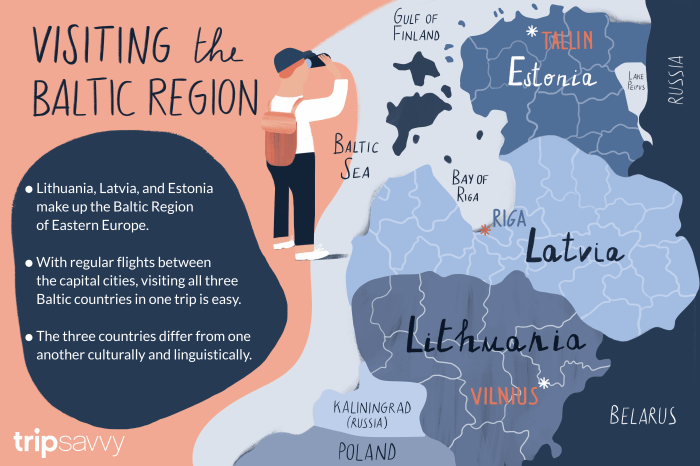
The Baltic Sea is a unique ecosystem due to its brackish water, formed by the mixing of saltwater from the North Sea and freshwater from rivers and streams. This creates a delicate balance that supports a diverse range of marine life, including fish, seals, and seabirds.
However, the Baltic Sea faces several environmental challenges, including pollution from industrial and agricultural sources, overfishing, and climate change. Pollution has led to eutrophication, where excess nutrients cause algal blooms that deplete oxygen levels and harm marine life. Climate change is also affecting the Baltic Sea, with rising temperatures leading to sea-level rise, changes in salinity, and more frequent and severe storms.
Efforts to Protect the Baltic Sea
Efforts are being made to protect and preserve the Baltic Sea environment. The Helsinki Commission (HELCOM) is an intergovernmental organization that coordinates environmental cooperation between the Baltic Sea countries. HELCOM has developed and implemented several action plans to address pollution, overfishing, and climate change.
- The Baltic Sea Action Plan (BSAP) sets out a roadmap for achieving a healthy Baltic Sea by 2021. The BSAP includes measures to reduce pollution, improve water quality, and protect biodiversity.
- The HELCOM Regional Action Plan on Climate Change (RAP CC) Artikels actions to mitigate and adapt to the effects of climate change on the Baltic Sea.
- The HELCOM Regional Action Plan on Marine Litter (RAP ML) aims to reduce marine litter in the Baltic Sea by promoting waste prevention, recycling, and cleanup efforts.
In addition to HELCOM, several other organizations and initiatives are working to protect the Baltic Sea environment. These include the World Wildlife Fund (WWF), the Baltic Sea Forum, and the Stockholm Resilience Centre.
Baltic History

The Baltic Sea region has a rich and complex history, shaped by its strategic location and the diverse cultures that have inhabited its shores. The Baltic Sea has been a vital trade route and a battleground for centuries, and its history is closely intertwined with the development of Europe.
The earliest known inhabitants of the Baltic Sea region were the Finno-Ugric peoples, who arrived around 8000 BC. The Germanic peoples began to arrive in the region around 500 BC, and the Slavs arrived around 500 AD. These three groups of peoples have shaped the culture and history of the Baltic Sea region to this day.
Major Wars and Conflicts
The Baltic Sea region has been the site of many major wars and conflicts over the centuries. The most significant of these include:
- The Thirty Years’ War (1618-1648): This war devastated the Baltic Sea region, and resulted in the deaths of millions of people.
- The Great Northern War (1700-1721): This war was fought between Sweden and Russia for control of the Baltic Sea. Russia emerged victorious from the war, and became the dominant power in the region.
- The Napoleonic Wars (1803-1815): These wars saw the French Empire attempt to conquer Europe. The Baltic Sea region was a major battleground in these wars, and the French were eventually defeated.
- World War I (1914-1918): The Baltic Sea region was a major battleground in World War I. The war resulted in the collapse of the Russian Empire, and the creation of the independent Baltic states of Estonia, Latvia, and Lithuania.
- World War II (1939-1945): The Baltic Sea region was again a major battleground in World War II. The war resulted in the occupation of the Baltic states by the Soviet Union. The Baltic states regained their independence in 1991.
Role of the Baltic Sea in European History
The Baltic Sea has played a vital role in European history. It has been a major trade route for centuries, and has helped to connect the East and West. The Baltic Sea has also been a source of conflict, and has been the site of many wars and battles.
The Baltic Sea has also been a source of inspiration for artists and writers. The sea has been the setting for many works of literature, and has inspired many works of art.
Baltic Culture

The Baltic region boasts a rich and diverse cultural heritage shaped by a blend of influences from different ethnic groups and religions. Each country within the region has its unique traditions, but there are also shared cultural threads that connect them.
The Baltics, with its rich history and stunning landscapes, offers a wealth of cultural experiences. Venturing beyond its borders, we discover the vibrant Barry Island , a coastal paradise in Wales. Its sandy beaches, amusement park, and Victorian charm make it a perfect day trip destination.
Returning to the Baltics, we continue our exploration of its captivating cities, each with its unique blend of history and modernity.
The Baltic countries have a long history of interaction with neighboring cultures, including Germanic, Slavic, and Scandinavian influences. These interactions have left a lasting impact on the region’s language, art, music, and literature.
Art and Architecture
Baltic art and architecture showcase a blend of traditional and modern styles. Medieval churches and castles stand alongside contemporary museums and skyscrapers, reflecting the region’s rich history and ongoing cultural evolution.
- Gothic architecture is prevalent in many Baltic cities, with examples such as the St. Mary’s Church in Tallinn and the Riga Cathedral.
- Art Nouveau architecture is also prominent, particularly in Riga, where buildings like the House of Blackheads and the Alberta iela district showcase its distinctive style.
- Contemporary Baltic artists have gained international recognition for their innovative works, including painters like Vija Celmins and photographers like Antanas Sutkus.
Music and Dance
Baltic music and dance traditions are vibrant and varied. Folk music, with its traditional instruments and melodies, remains popular in all three countries.
- Estonia is known for its choral singing, with renowned ensembles like the Estonian Philharmonic Chamber Choir.
- Latvia has a strong tradition of folk music and dance, with groups like Skandinieki performing traditional dances and songs.
- Lithuania is home to the Baltic Opera, which stages a wide range of operas and ballets.
Literature
Baltic literature has produced a wealth of renowned authors and poets. Many Baltic writers have explored themes of national identity, history, and the human condition.
Baltics, a region of Northern Europe, is rich in history and culture. For those seeking an adventure beyond the Baltics, alaskausa offers breathtaking landscapes and an abundance of wildlife. However, the Baltics remains a captivating destination, with its charming cities and unspoiled natural beauty, waiting to be explored.
- Jaan Kross, an Estonian writer, is known for his historical novels and essays on Baltic culture.
- Vizma Belševica, a Latvian poet, is celebrated for her lyrical and evocative poetry.
- Jurgis Kuncinas, a Lithuanian writer, wrote extensively about the Lithuanian countryside and its people.
Baltic Tourism: Baltics
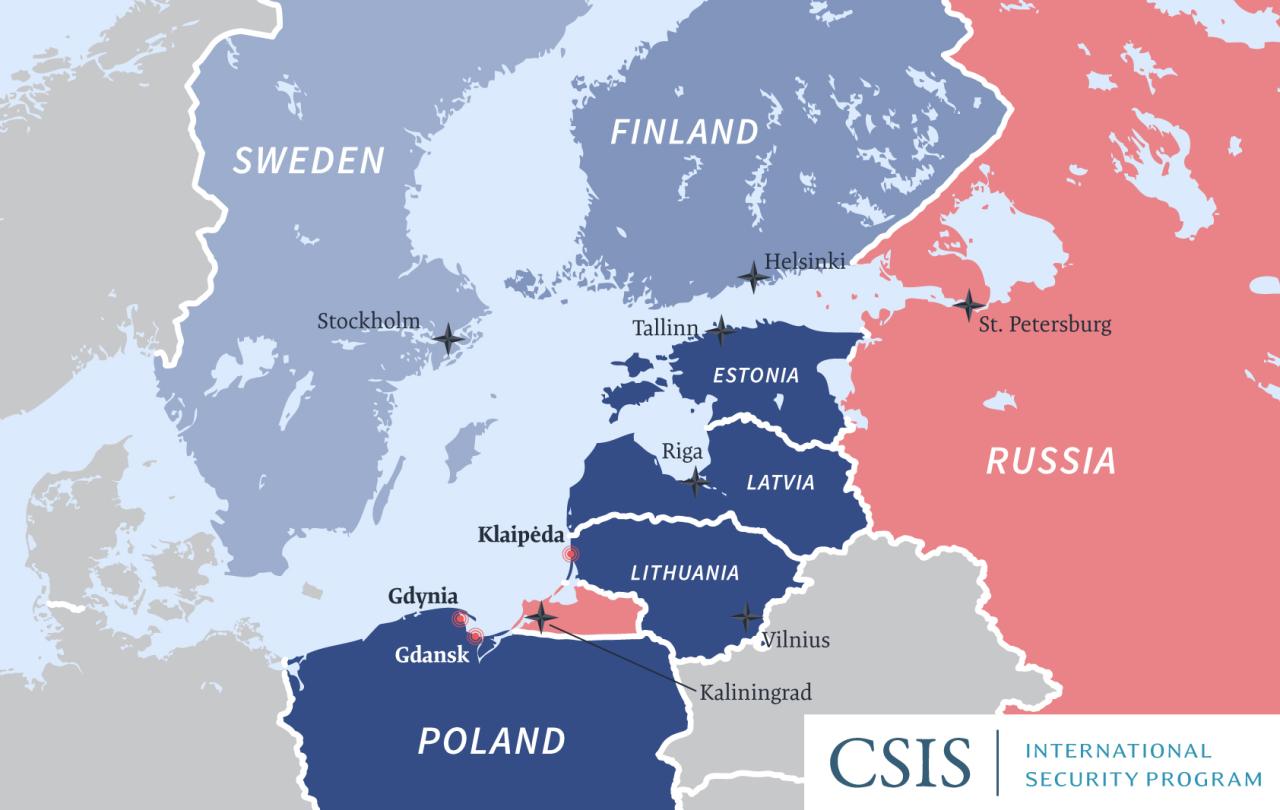
The Baltic Sea region boasts a captivating array of destinations, each offering unique attractions and experiences that allure travelers worldwide. From vibrant metropolises to serene coastal towns, the Baltics cater to diverse interests and preferences.
Major Tourist Destinations
Tallinn, Estonia: A medieval gem with cobblestone streets, towering spires, and a vibrant Old Town that transports visitors to a bygone era.
Riga, Latvia: A bustling capital with a blend of Art Nouveau architecture, lively markets, and a thriving cultural scene.
Vilnius, Lithuania: A charming city known for its Baroque churches, historic streets, and vibrant nightlife.
Stockholm, Sweden: A picturesque archipelago with stunning views, iconic museums, and a vibrant urban center.
Helsinki, Finland: A modern metropolis with sleek architecture, trendy design, and a vibrant arts and culture scene.
Gdansk, Poland: A historic port city with a rich maritime heritage, charming Old Town, and stunning beaches.
Klaipėda, Lithuania: A coastal city with a beautiful Old Town, bustling harbor, and access to the Curonian Spit National Park.
Tips for Planning a Trip
* Consider the time of year, as the Baltics experience distinct seasons with varying weather conditions.
* Research visa requirements and apply well in advance if necessary.
* Explore transportation options, including flights, trains, and ferries, to optimize travel time and costs.
* Learn basic phrases in local languages to enhance interactions with locals.
* Book accommodations and activities in advance, especially during peak season, to secure availability.
* Respect local customs and traditions to ensure a positive travel experience.
Baltic Future
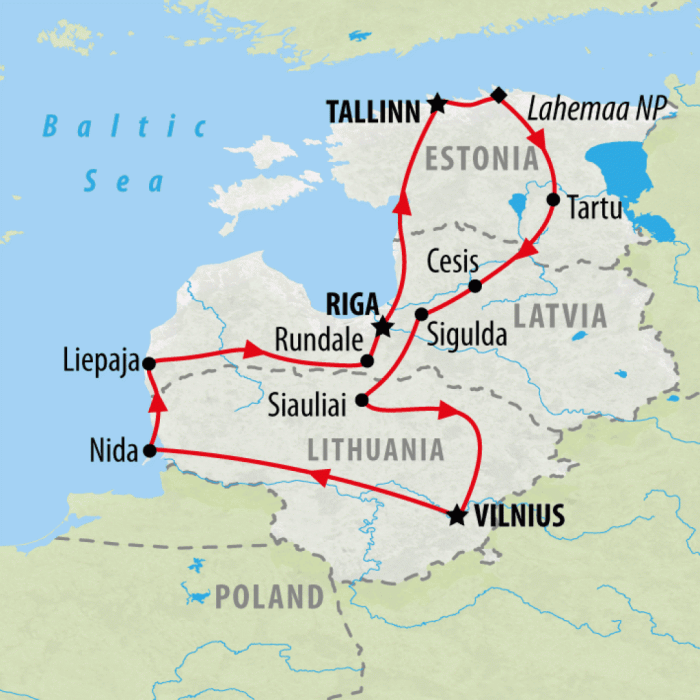
The Baltic Sea region faces numerous challenges and opportunities in the 21st century. Technological advancements, innovation, and sustainability play pivotal roles in shaping the future of the Baltic countries. Regional cooperation and integration offer immense potential for shared progress.
Technology and Innovation
Technology and innovation are transforming the Baltic Sea region. Advanced technologies in fields such as renewable energy, biotechnology, and information technology are driving economic growth and creating new opportunities. The region is home to several research and development hubs, fostering innovation and attracting skilled professionals.
Sustainability
Sustainability is a key concern for the Baltic Sea region, which is vulnerable to environmental challenges such as climate change and pollution. The Baltic countries are actively promoting sustainable practices, including reducing carbon emissions, protecting biodiversity, and promoting circular economy models.
Regional Cooperation and Integration
Regional cooperation and integration are crucial for the Baltic Sea region. The European Union has played a significant role in promoting cooperation among the Baltic countries, fostering economic integration, and addressing common challenges. The region is also strengthening its ties with other international organizations and neighboring countries.
Last Word
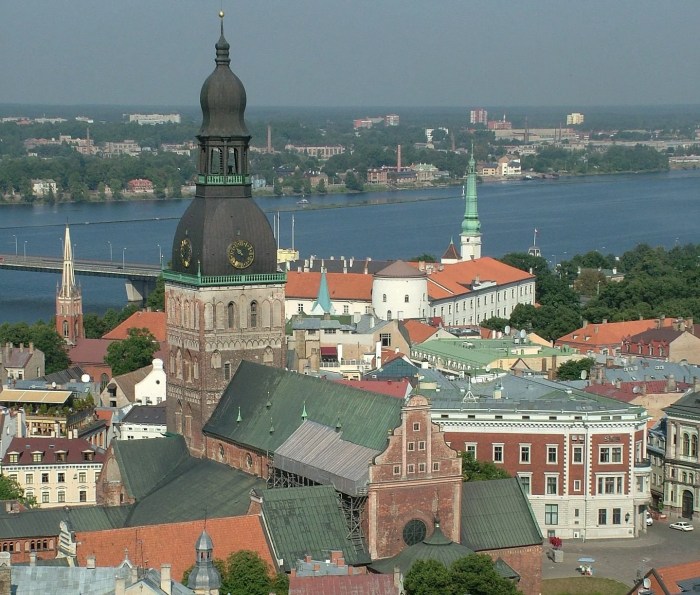
As we conclude our exploration of the Baltics, we are left with a profound appreciation for the region’s rich tapestry of history, culture, and natural beauty. The Baltic Sea, a vital lifeline for the surrounding countries, continues to shape their economies, environments, and destinies. The future of the Baltics holds immense potential, as technology, innovation, and sustainability play an increasingly important role in shaping the region’s trajectory.
Whether you seek adventure, cultural immersion, or simply the chance to witness the beauty of nature, the Baltics offer an abundance of experiences that will create lasting memories. Let the allure of this captivating region draw you in, and discover the many wonders that await.
FAQ Compilation
What is the Baltic Sea?
The Baltic Sea is a unique brackish water sea located in Northern Europe, bordered by Denmark, Estonia, Finland, Germany, Latvia, Lithuania, Poland, Russia, and Sweden.
What countries are considered part of the Baltics?
The Baltic countries include Estonia, Latvia, and Lithuania.
What is the cultural significance of the Baltics?
The Baltics have a rich cultural heritage influenced by various ethnic groups and religions, resulting in a diverse tapestry of traditions, art, music, and literature.